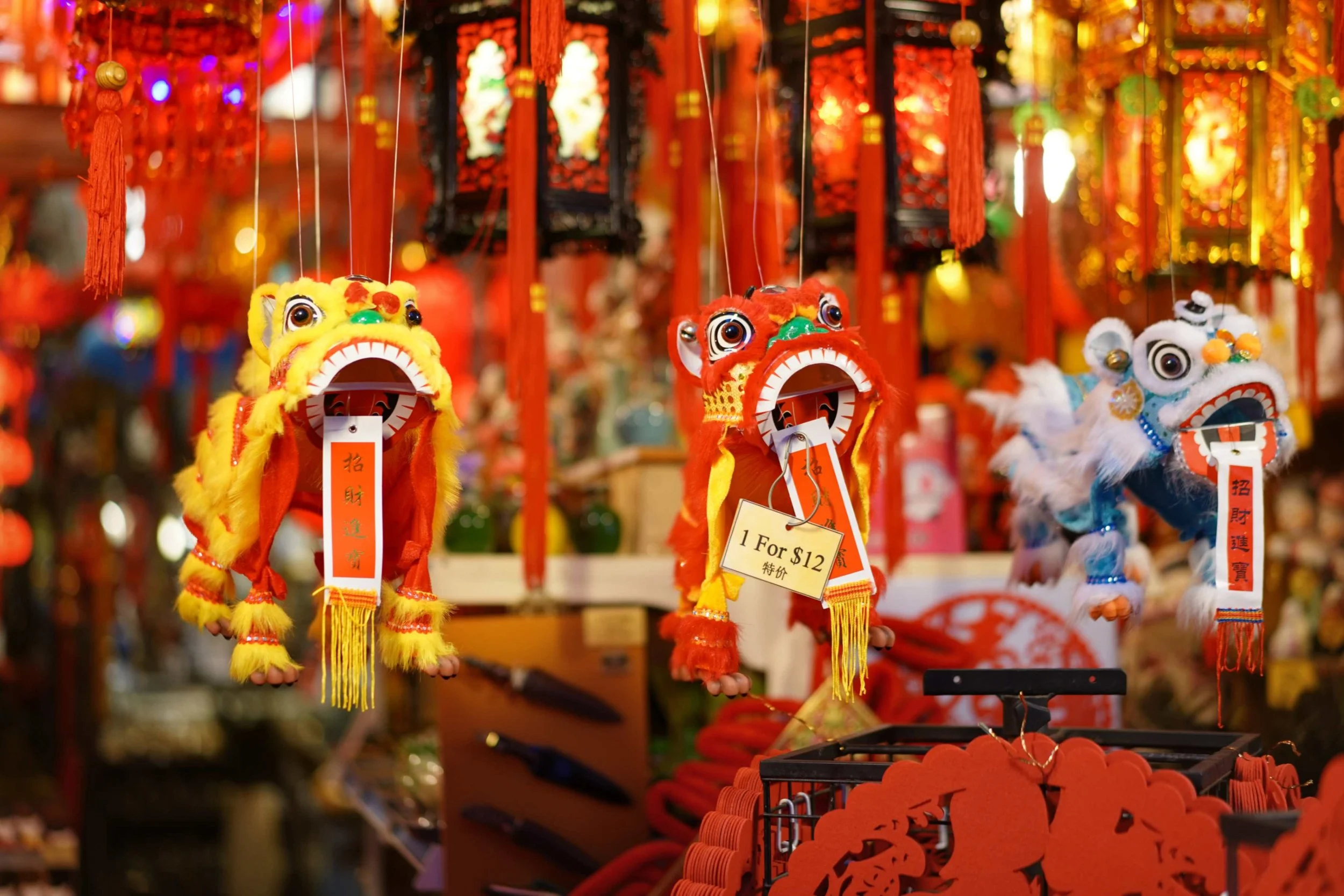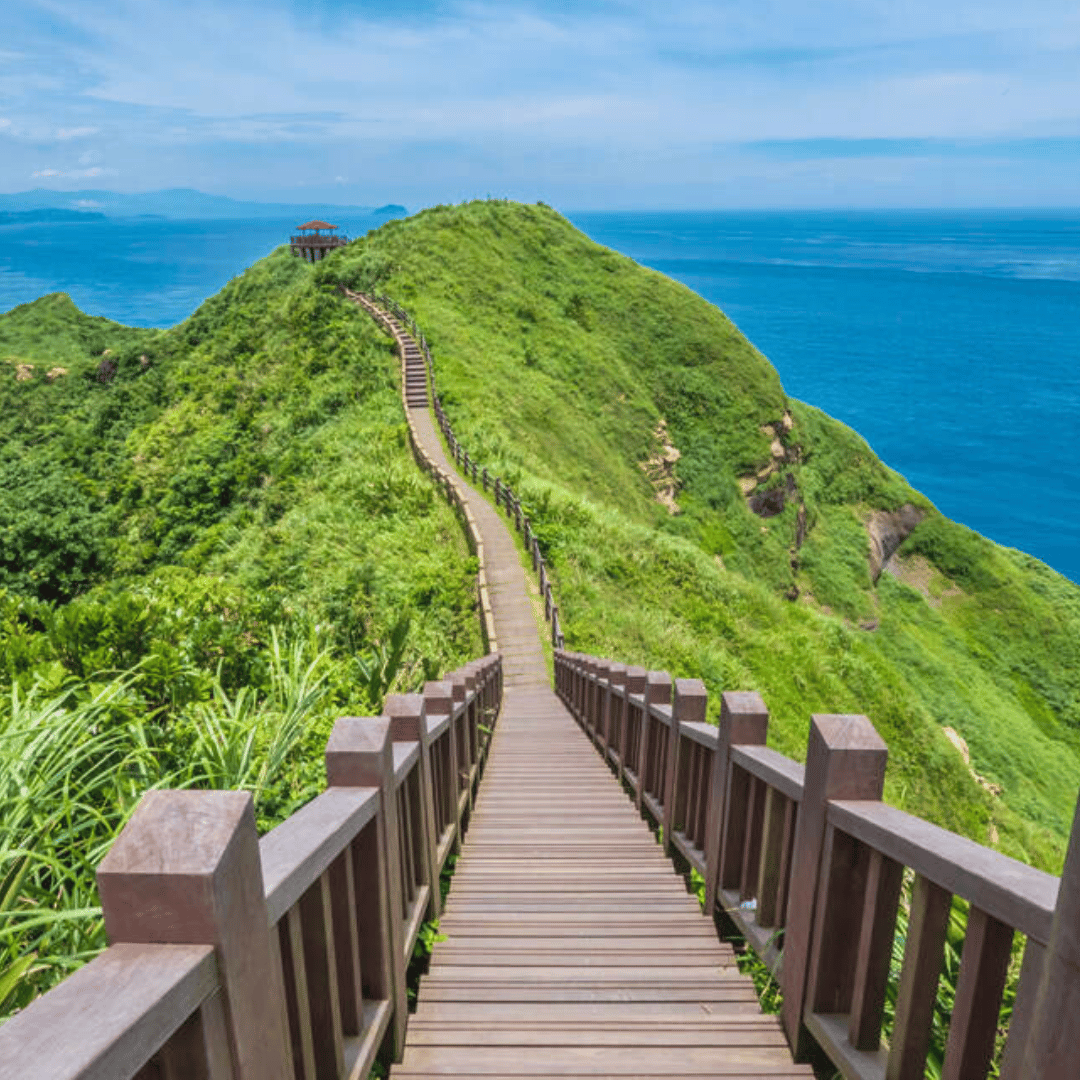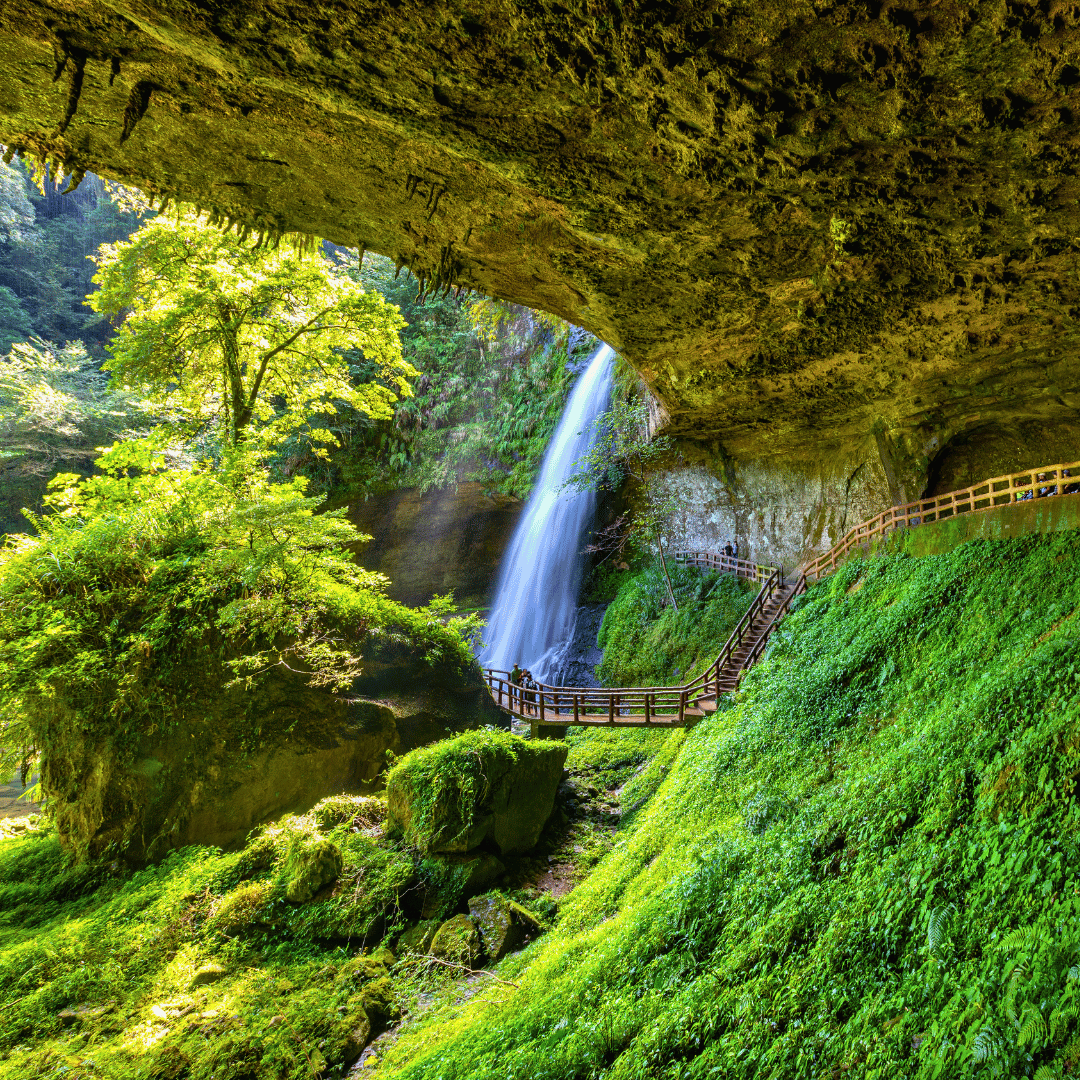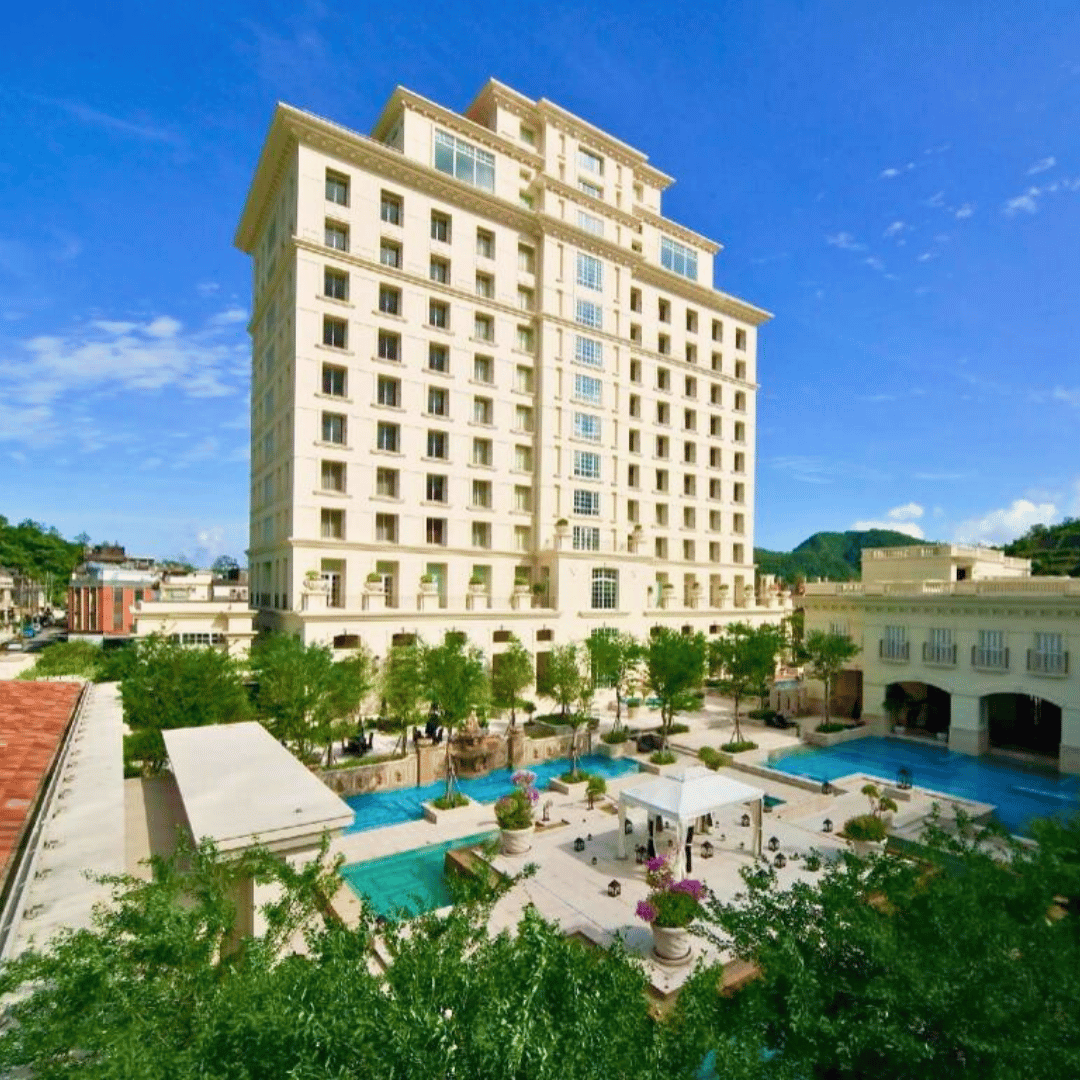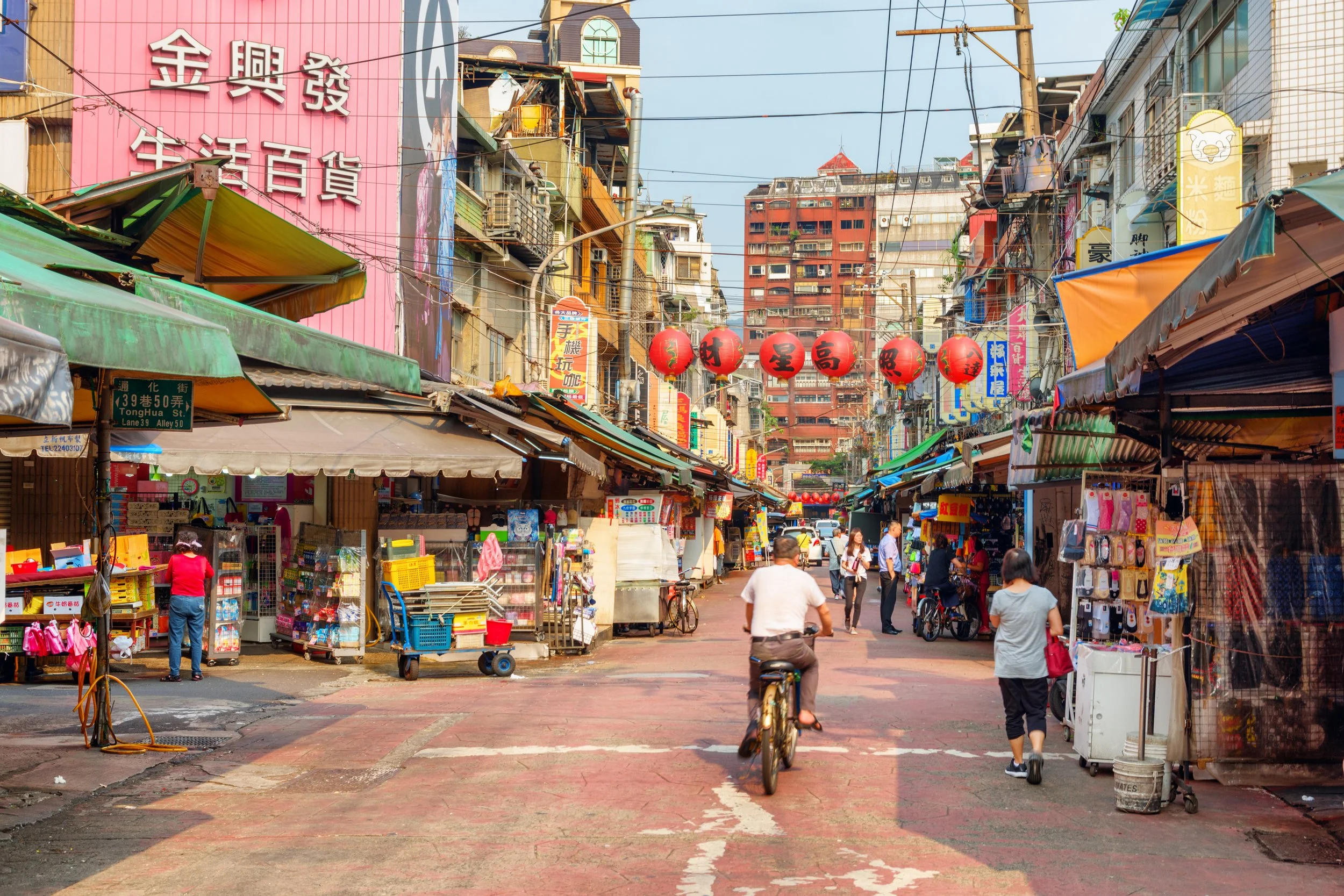
Taiwan Private Tour Packages
Bespoke Itineraries Designed For Australian Travellers
Taiwan is a land of deep tradition, striking landscapes and lively contrasts, where modern cities meet timeless countryside and coastal beauty. In Taipei, soaring towers and contemporary art museums sit beside night markets and historic temples, while Tainan reveals centuries of heritage through fortresses, shrines and colonial relics. Sun Moon Lake offers tranquil waters framed by forested hills, and Alishan’s misty peaks and tea fields showcase Taiwan’s mountain culture. Along the southern coast, Kaohsiung combines harbourfront energy with vibrant art districts, while Hualien and the east coast present fishing villages, ocean cliffs and indigenous traditions. On the western plains, cycling through rice fields and visiting local workshops reveal the island’s agricultural roots.
Private tours of Taiwan can be designed to your style and pace, whether you want to trace cultural history in ancient towns, explore volcanic landscapes, join tea tastings in upland plantations, or simply relax in hot springs by the coast. From colourful festivals to quiet rural life, Taiwan private tour packages offer an authentic and rewarding way to discover this captivating island. At Asia Unbound, we design private journeys across Asia for Australian travellers seeking flexible, well planned experiences and genuine cultural connection.
Our Best Taiwan Tour Itineraries
Taiwan Travel Advice For First Time Visitors
-
When preparing for a journey to Taiwan, it’s useful to know how seamless and well-organised travel within the island can be. The High Speed Rail (HSR) runs down the west coast and allows you to travel between Taipei, Taichung, Tainan and Kaohsiung in under two hours, while an extensive network of local trains and buses makes exploring smaller towns and the east coast straightforward. Taxis are affordable and ride-hailing apps operate in the cities, making short journeys simple. Most visitors arrive via Taipei Taoyuan International Airport, though Kaohsiung and Taichung also serve some regional international flights.
Taiwan has a reputation for being safe, modern and very accessible to foreign visitors. Signage at transport hubs and major attractions is usually in both Mandarin and English, and many younger locals are keen to practise their English. Visa exemptions or e-visas are available for numerous nationalities, which means entry requirements are generally uncomplicated. Cash in New Taiwan Dollars is still widely used, particularly in markets and smaller businesses, although credit cards are accepted in larger hotels, shops and restaurants. Convenience stores such as 7-Eleven and FamilyMart are open 24 hours and are a surprisingly useful resource for travellers, offering everything from SIM cards and train ticketing to laundry services.
Taiwan’s cultural character is shaped by a blend of influences. Traditional Chinese heritage is evident in its ornate temples and festivals, Japanese influence is reflected in architecture and railways, and indigenous communities contribute distinct traditions, crafts and beliefs. Temple visits are a highlight of daily life, and as a visitor you’ll be welcome to join respectfully - keeping voices low, refraining from flash photography and following the lead of locals when it comes to rituals. Small gestures of politeness, such as offering or receiving with two hands, are noted and appreciated.
Practical conveniences add to the ease of travel. Free public Wi-Fi is available in many cities, and affordable SIM cards with generous data plans can be purchased at the airport on arrival. Taiwan is also one of the most tourist-friendly destinations in Asia, with staffed visitor information centres in train stations, airports and popular sites, often with English-speaking staff and maps. Combined with its infrastructure, hospitality and cultural richness, these details make Taiwan not only straightforward to explore but also highly rewarding for curious travellers.
-
Taiwan is not divided into states, but instead into a system of special municipalities, counties and provincial cities, each with its own local government and identity. This structure reflects the island’s blend of modern development and regional diversity.
The six special municipalities are Taipei, New Taipei, Taoyuan, Taichung, Tainan and Kaohsiung. These are Taiwan’s largest metropolitan areas, home to the majority of its population and economic activity. Taipei is the capital and the political and cultural centre, while Kaohsiung in the south is a major port city. Taichung and Tainan are hubs of history and industry, and Taoyuan and New Taipei play important roles in commerce and connectivity.
Outside the big cities, Taiwan is made up of 13 counties, which cover much of the island’s rural and mountainous regions. Hualien and Taitung on the east coast are known for their dramatic coastline, indigenous communities and access to national parks. Nantou in central Taiwan is landlocked but famous for Sun Moon Lake and tea plantations. Pingtung in the far south reaches down to Kenting National Park, a favourite for beaches and coral reefs. Other counties, like Miaoli or Yunlin, highlight Taiwan’s agricultural heartland and slower rhythms of life.
In addition, there are three provincial cities: Keelung, Hsinchu and Chiayi. Though smaller in scale, they hold historical importance. Keelung is a busy port city close to Taipei, Hsinchu is known as the centre of Taiwan’s high-tech industry, and Chiayi is the gateway to Alishan, one of the island’s most famous mountain landscapes.
For travellers, this division provides a framework for exploring Taiwan’s contrasts. The west coast is dominated by urban centres and high-speed rail connections, while the east coast and central mountains showcase wide open spaces, national parks and indigenous heritage. Together, the municipalities, counties and provincial cities create a patchwork of experiences that highlight Taiwan’s blend of the modern and the traditional.
-
The official language of Taiwan is Mandarin Chinese, locally called Guóyǔ (National Language). It is the language of government, education and media, and most public signs in cities appear in both Mandarin and English. For travellers, this makes navigation relatively simple.
Alongside Mandarin, you’ll often hear Taiwanese Hokkien (known as Taiyú), particularly in the south and among older generations, and Hakka, spoken in pockets of northern and western Taiwan. Taiwan is also home to 16 recognised indigenous groups, each with its own Austronesian language, which you may encounter at cultural events or in rural areas.
For visitors, English is increasingly common, especially among younger people and those working in tourism. Staff at hotels, airports and major attractions generally speak English, and transport announcements on trains and metro systems are often made in Mandarin, Taiwanese, Hakka and English - so travellers don’t miss important information.
That said, using a few basic Mandarin phrases will be warmly appreciated. Here are some helpful ones with pronunciation:
Hello - 你好 (Nǐ hǎo, pronounced “nee haow”)
Thank you - 謝謝 (Xièxiè, pronounced “shieh-shieh”)
Excuse me / Sorry - 不好意思 (Bù hǎo yìsi, pronounced “boo haow yee-suh”)
How much is this? - 這個多少錢? (Zhège duōshǎo qián?, pronounced “jer-guh dwor-shaow chyen?”)
Yes - 是 (Shì, pronounced “shir”)
No - 不是 (Bú shì, pronounced “boo shir”)
Even if your pronunciation isn’t perfect, locals will recognise and appreciate the effort. A smile and a polite phrase go a long way in Taiwan, often opening doors to warmer interactions.
-
The best time of year to visit Taiwan depends on the type of experience you are seeking, as each season highlights a different side of the island. Taiwan’s varied geography means there is always something happening, from cultural festivals to outdoor adventures, but spring and autumn are generally regarded as the most comfortable and rewarding times to travel.
Spring (March to May) is one of the most popular times for visitors. Temperatures are mild, the air feels fresh, and flowers bloom across the island, from cherry blossoms in Alishan and Yangmingshan National Park to fields of calla lilies and azaleas. This is also a great time for hiking and cycling, with clear trails and landscapes full of colour. Festivals such as the Mazu Pilgrimage add a cultural layer to travel during this season.
Autumn (September to November) is another ideal period. The weather is settled, with sunny days and lower humidity, making it perfect for exploring both cities and natural areas. Mountain scenery takes on autumn hues, while hot springs become especially inviting as evenings cool down. The Mid-Autumn Festival, with its lanterns and mooncakes, adds cultural charm, and harvest celebrations in rural areas offer opportunities to see Taiwan’s traditions up close.
Summer (June to August) is the liveliest season, with long days, school holidays, and a festive atmosphere. Dragon Boat Festival races take place across the island, and the south coast - particularly Kenting and the offshore islands - comes alive with beachgoers, diving, and water sports. This is also when the mountains are at their greenest, attracting hikers and nature enthusiasts. However, it is also the hottest and most humid period, so travel is more energetic than relaxed.
Winter (December to February) brings cooler weather, though it remains relatively mild compared to much of East Asia. The north can be damp and chilly, while the south stays comfortable for sightseeing. This season is perfect for enjoying Taiwan’s famous hot springs, from Beitou near Taipei to rural spring resorts in the mountains. Lunar New Year, Taiwan’s most important holiday, fills the streets with markets, decorations, and family gatherings, giving travellers a glimpse into local traditions.
In short, spring and autumn are the most popular times to visit for balanced weather and cultural highlights, while summer and winter suit travellers seeking energy, festivals, or relaxation in hot springs. No matter the season, Taiwan has something to offer - from flower festivals and mountain hikes to island beaches and cultural celebrations.
-
When packing for Taiwan, think about comfort, convenience and respect for local customs rather than strict dress codes. Taiwan is modern and cosmopolitan, so you will see a wide mix of styles in the cities, from casual wear to smart office attire. For most travellers, neat and comfortable clothing is perfectly appropriate.
Light, breathable fabrics are useful for sightseeing, especially in urban areas where you will be walking a lot. Comfortable shoes are essential, whether you are exploring temples, strolling through night markets or hiking in the mountains. If you plan to visit religious sites, dressing modestly is appreciated, with shoulders and knees covered as a sign of respect. While it is not usually enforced, avoiding revealing clothing in temples helps you blend in politely.
In the mountains or countryside, layers are practical. Temperatures can drop quickly at higher elevations, and Taiwan’s weather can shift from warm sunshine to cooler evenings. A light jacket or sweater is worth carrying year round, especially if you will be travelling into central Taiwan or the east coast.
Taiwanese people are generally relaxed about dress, but one thing to keep in mind is that the island places a high value on cleanliness and presentation. Even in casual settings, locals often look tidy. By packing versatile, comfortable clothing that can adapt to different environments such as city streets, cultural visits and nature excursions, you will be well prepared.
-
Taiwan is often considered one of the most exciting food destinations in Asia, where eating is as much a cultural experience as it is a daily routine. The island’s cuisine draws from Chinese traditions, Japanese influence and indigenous heritage, creating an incredible variety of flavours and dishes. Food is available everywhere, from busy night markets and street stalls to modern cafes and fine dining restaurants, and locals take enormous pride in what they eat.
Night markets are at the heart of Taiwan’s food culture. These lively evening gatherings are where you can sample a wide range of small dishes and snacks. Signature favourites include the oyster omelette with its mix of seafood and savoury sauce, pepper buns baked in clay ovens, crispy fried chicken cutlets, grilled squid, stinky tofu and the world famous bubble tea which was created in Taiwan. Eating at a night market is more than just a meal, it is a chance to join locals in one of their most beloved traditions.
Seafood is another highlight of Taiwanese cuisine. Being an island, fresh fish, prawns, clams and crab are abundant, and you will find everything from simple grilled skewers at harbourside stalls to elaborate multi course seafood meals in restaurants. In central and eastern Taiwan, countryside kitchens serve seasonal vegetables, wild herbs and hearty soups. Hakka cuisine is known for its braised pork belly, stir fried greens and preserved vegetables, while indigenous communities prepare dishes with millet, root vegetables, mountain greens and game meats that reflect centuries of tradition.
For comforting everyday meals, there are dishes that every visitor should try. Beef noodle soup is often called Taiwan’s national dish, with its tender meat, aromatic broth and chewy noodles. Lu rou fan is another favourite, a simple bowl of rice topped with braised pork. Other must tries include gua bao, a soft steamed bun filled with pork and pickled greens, scallion pancakes, dumplings and Taiwanese style dim sum. Vegetarian travellers will find Taiwan especially welcoming, as Buddhist traditions have shaped a long history of creative plant based cooking, with tofu and vegetables prepared in countless ways.
Desserts and drinks also play a big part in local food culture. Shaved ice with fruit, sweet beans or condensed milk is popular in warmer months, while winter melon tea and herbal drinks are enjoyed year round. Street stalls sell freshly pressed fruit juices, and in cooler weather locals turn to hot sweet soups made with taro or red beans. These small details give Taiwan’s food scene a unique rhythm that reflects the island’s mix of influences and its love of eating well.
-
When planning how long to spend in Taiwan, it helps to think in blocks of one, two or three weeks. Each length of trip offers a different style of experience, from an introduction to the highlights to a deeper exploration of the island’s regions and offshore islands.
One week in Taiwan works well for first time visitors who want to experience the country’s energy without overpacking their schedule. You can spend a few days in Taipei exploring temples, night markets, museums and modern city life. Easy day trips to Jiufen, Yehliu Geopark or Yangmingshan National Park show off the island’s landscapes and traditions. To broaden the trip, you might add Sun Moon Lake in central Taiwan or a visit to the historic city of Tainan in the south.
Two weeks gives you time to travel around more of the island and balance big cities with countryside and coastlines. You might start in Taipei, then travel south by high speed rail to Taichung, Tainan and Kaohsiung, each with its own character and attractions. Central Taiwan offers mountain scenery, tea plantations and Sun Moon Lake, while the east and south coasts are perfect for dramatic landscapes, cultural encounters and beach time in Kenting. This timeframe allows a relaxed pace, with space for both cultural discovery and time outdoors.
Three weeks is ideal for travellers who want to see Taiwan in depth. With this much time, you can circle the island and add experiences beyond the main highlights. Consider visiting offshore islands such as Penghu for beaches, Kinmen for heritage and military history, or Green Island for diving and natural hot springs. You can also take more time in places like Tainan, Hualien or Kaohsiung, joining cooking classes, tea tastings or local festivals. Three weeks lets you connect with Taiwan more slowly, enjoying a blend of culture, nature and daily life.
In short, one week offers a taste, two weeks provides a full and balanced journey, and three weeks allows for a deeper, more immersive experience across Taiwan.
-
Yes, it is very easy to combine a private tour of Taiwan with a journey to another nearby country. Taiwan is well connected by air to major Asian destinations, making multi country travel smooth and convenient.
Many travellers choose to combine Taiwan with Japan, as there are frequent direct flights between Taipei and cities such as Tokyo, Osaka and Fukuoka. This pairing works well if you want to experience both Taiwan’s living traditions and Japan’s mix of cutting edge cities and timeless heritage in one trip.
Another excellent option is South Korea, with short flights linking Taipei to Seoul and Busan. Travelling between the two gives you a chance to compare and enjoy the vibrant street food cultures, historic palaces, coastal scenery and dynamic modern cities that both countries offer.
Booking through Asia Unbound ensures that your private tour is seamless from start to finish. Our team designs every itinerary around your interests and style, arranging flights, transfers, guides and accommodation across multiple countries. This means you have one point of contact, consistent quality and 24/7 support, making it far easier than piecing together separate tours. With Asia Unbound, you can focus on enjoying the journey while we take care of the logistics.
Popular Places To Visit In Taiwan
Plan Your Taiwan Itinerary With Asia Unbound
Established in 2007, Unbound Travel Group is a collection of tourism brands specialising in highly curated private touring and small group journeys throughout Asia. With more than two decades of experience, we create bespoke itineraries for discerning travellers looking for a real adventure. Based in Australia, our team uses our on-the-ground experience and first-hand knowledge to carefully curate experiences that are innovative and authentic.
When you start to research a trip to Asia, it’s easy to feel overwhelmed by the seemingly endless possibilities, especially if you don’t want to join a group tour. At Asia Unbound, we’ve made this process easy. We simply need you to tell us relevant information about yourself and the type of travel experience you are looking for - whether it’s a wish list of places you want to visit, a style of travel, a particular interest or theme that you want to explore, or all of these factors. Using this information, we curate a custom-made Asia private tour just for you. It’s that simple.
Taiwan Hotel Recommendations
